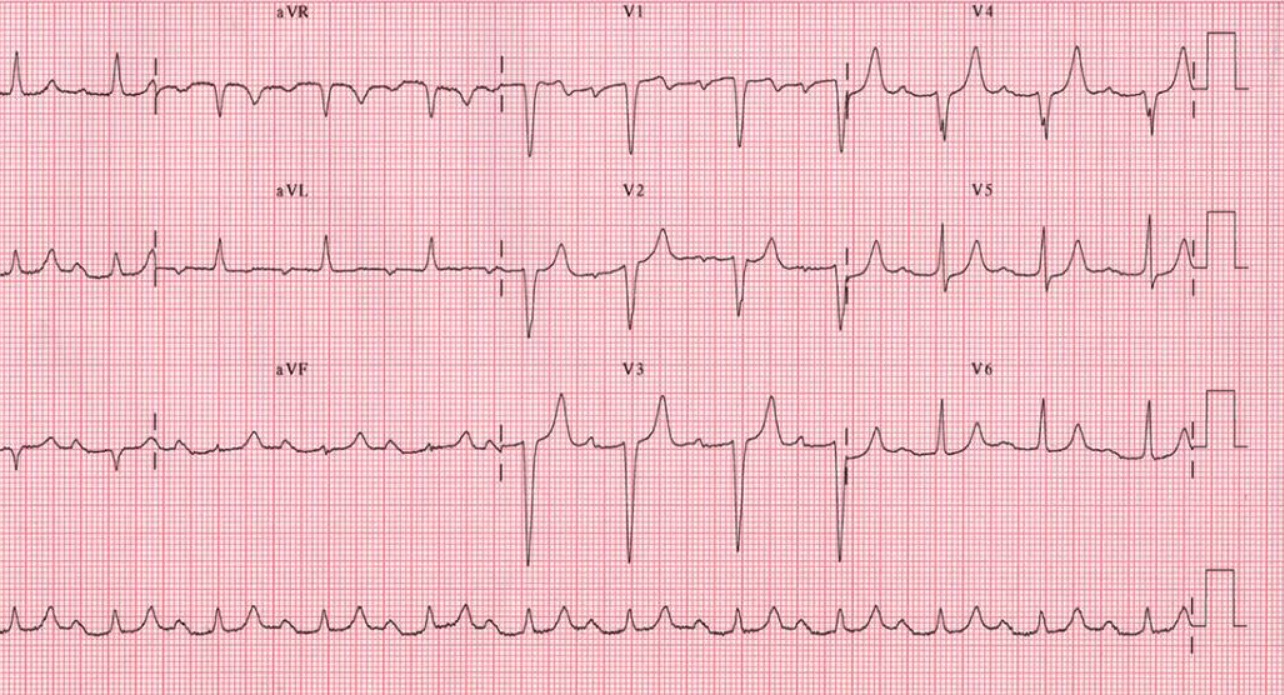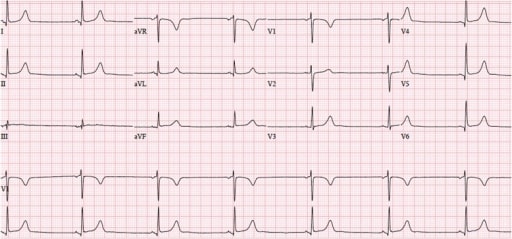Playlist
Show Playlist
Hide Playlist
First-degree AV Blocks
-
Slides Heart Blocks.pdf
-
Reference List Electrocardiogram (ECG) Interpretation.pdf
-
Download Lecture Overview
00:01 Now again, as I mentioned before, sinus node dysfunction is much less common than atrioventricular node dysfunction. 00:08 So, the interruption in the electro conduction system usually occurs in or near the AV node and there are three levels of block. 00:17 One is benign or relatively benign. One is more serious and one is very serious, and we call them first-degree AV block, second-degree AV block and third-degree or complete heart block and we'll talk about each of these now in more detail. 00:32 So, here, we see first-degree AV block and you can see, look on the top strip. 00:40 There is a - you can hardly see the first P-wave, but let's look at the second beat. 00:45 There's a P-wave, then there's a QRS. 00:48 But look at how long the pause is between the P-wave and the QRS and the next beat as well. 00:54 It's taking a long time for the electrical impulse to get through the AV node. 00:59 So, remember that the normal PR interval is 0.2 seconds or five little boxes. 01:05 In this case, the PR interval is actually 9.5 little boxes or 0.38 seconds and we call this first-degree AV block, usually asymptomatic; the patients don't notice it. 01:18 Here is another example of first-degree AV block. 01:21 You'll notice, again, normal PR intervals, are 3 to 5 little boxes, 0.12-0.20 seconds. 01:28 In this case it's a six and a half little boxes or 0.26 seconds, in other words, first-degree AV block. 01:35 Another example, not as severe as the last one.
About the Lecture
The lecture First-degree AV Blocks by Joseph Alpert, MD is from the course Electrocardiogram (ECG) Interpretation. It contains the following chapters:
- AV-Blocks - Atrioventricular Blocks
- First Degree AV-Block
Included Quiz Questions
Which of the following best describes a first-degree AV block?
- Prolonged (> 200 ms) PR interval
- Abnormally fast accessory conduction pathway from the atria to ventricles that bypasses the AV node
- P waves and QRS complexes that are not rhythmically associated
- Progressive lengthening of the PR interval until a beat is dropped
- Dropped beats that are not preceded by a change in the length of the PR interval
Customer reviews
5,0 of 5 stars
| 5 Stars |
|
5 |
| 4 Stars |
|
0 |
| 3 Stars |
|
0 |
| 2 Stars |
|
0 |
| 1 Star |
|
0 |





